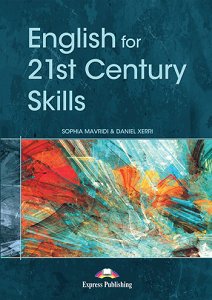Creating inclusive classrooms where every student can thrive is our job, but what happens when we are short on resources, support, or even qualifications to approach certain challenges? When planning lessons for visually impaired students in EFL classrooms, inclusive strategies and accessible materials are essential.
In this blog post, we explore the ways we can create an inclusive classroom environment that caters to visually impaired students in our EFL classroom.
Why Inclusivity Matters in the EFL Classroom
Visually impaired learners often experience disconnection from their peers, low self-esteem, and a lack of motivation, especially when classrooms aren’t designed to support diverse learning needs. This doesn’t just hinder their language acquisition, it can limit their long-term academic confidence and success.
The good news? With a few simple adjustments, we can make our classrooms more accessible, engaging, and empowering for all.
.png)
Activities to Avoid When Teaching Visually Impaired Students
Some common EFL classroom tasks can unintentionally exclude visually impaired learners. Try to avoid the following:
- spot the differences
- describe one’s surroundings
- match the vocabulary to the definition
- comment on the chart or diagram
- comment on or play with flashcards (unless large size for visually impaired)
- complete picture-based exercises
- fill in the blanks
- unscramble the words
- relying solely on a teaching assistant, instead involve the student directly
Inclusive Strategies That Work
Instead of removing content, reframe your activities to be more inclusive. Try the following:
-
communicate regularly with families to understand the learner’s needs better
-
use tactile materials and real-life objects (realia) to bring language to life
-
repeat key points aloud instead of relying solely on what's written on the board
-
address students by name and supplement gestures with clear verbal instructions
-
use a flipped classroom approach—let students engage with content ahead of class
-
minimize background noise to help with focus and accessibility
-
encourage peer partnerships—students can support and learn from each other
-
allow lesson recordings and provide enlarged handouts when possible
-
seat students strategically (e.g., toward the front, in well-lit areas)
-
ensure appropriate classroom lighting to accommodate varying levels of vision
Make Inclusion Part of Your Teaching Toolkit
Creating an inclusive classroom doesn’t require a complete curriculum overhaul—it simply requires intention, awareness, and a few key adaptations. With the right approach, we can provide visually impaired learners with a rich and rewarding language-learning experience.
Learn More About Inclusive ESL Teaching
Looking for practical tools and expert insights?
👉 Visit Paths to Literacy for resources on teaching ESL to learners who are blind or visually impaired.
📌 Save this guide or share it with a fellow educator who wants to make a difference!
.png)








